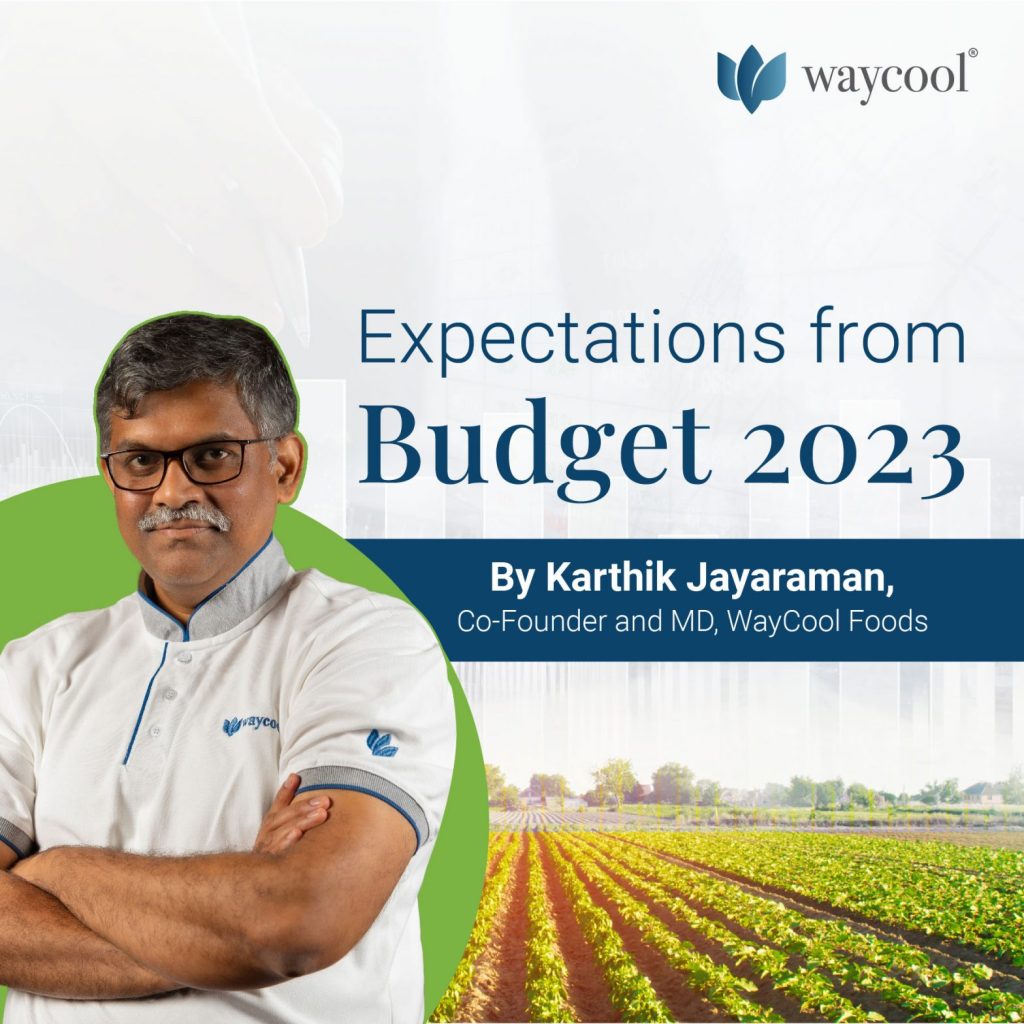

The startup ecosystem has grown tremendously in the past few years. However, if one peels the layers, one notices an anomaly. Private capital naturally flows into sectors where big payouts are possible, even if highly risky, or where returns can be captured fast. This has resulted in considerable capital inflows into frothy sectors such as gaming, crypto, stock trading and the like. Even in relatively deeper sectors such as food, the capital that has flowed into high speed last mile delivery is an order of magnitude greater than what has gone into food logistics/supply chain. It has now become critical to ensure that private capital (both domestic and international) flows into sectors of national importance. Private capital needs to be made to work harder and create meaningful assets for the country. Given this, the time has come for the Government to put its thumb on the scale, by incentivising private capital to flow into sectors of national importance such as food and agri, healthcare and education, and if required, disincentivising its flow into sin sectors/frothy sectors. There have been requests to rationalise long term capital gains tax by private equity investors. This provides one opportunity for the government to send the right signals – eg differentiated LTCG Tax for sectors of national importance vs the others. Direction of India’s infrastructure investment funds to expand their horizons beyond hard infrastructure investments alone, and into technology investments related to the infrastructure sectors e.g. logistics and supply chains, healthtech and edtech, as well as creation of new government vehicles (e.g. sovereign wealth funds, AIFs) directed towards these spaces will be another welcome measure. These, coupled with capital gains tax breaks for such vehicles, will help accelerate equity investments into sectors such as these.
In addition to the above, it is important to encourage the flow of domestic capital into sectors of national importance. Domestic capital has been relatively risk averse. Given this, incentivising them to place calculated bets on sectors such as these will accelerate development of these sectors, while also providing better returns to investors, and ensuring that the ownership of these assets are more domestic than global. Creative means may be explored for this. For e.g. if the mandatory CSR program for corporates can be modified to treat investments into AIFs focussed on sectors such as food, education and healthcare, as deemed CSR, this will make CSR funds work harder and more efficiently, and also provide the possibility of an upside to company treasuries, rather than being dissolved as a grant.
Food security will become one of the pressing concerns due to the impact of climate. Given this, more investments are needed in the food supply chain, starting from the development of climate resilient seeds, to improving storage and supply chain practices, to reducing food miles to reducing food waste. Today, the Government has declared agriculture as a priority sector, and facilitated the enablement of low-cost debt finance to this sector. However, given the extent of fragmentation of farms, administering this has proven to be challenging to most lenders. It is time we looked at food, and not just agriculture, as a priority sector. This means that any one involved in the production, trading, processing, storage, transport and retail of food shall be eligible for priority sector lending for the creation of assets as well as for working capital. By enabling the entire value chain, particularly the forward supply chain, access capital at cheaper rates, the government can massively incentivise formalization and introduction of better technology into the sector. This will also be administratively easier for lenders as organised players are easier to work with and secure lending. While considerable subsidies are offered in this space including PLI scheme for food processing, the above decision can enable investments in this sector much more effectively, seamlessly and speedily
Today, in many parts of the country, the MNREGA program has created peculiar challenges such as the non-availability of farm labour. Tokenising MNREGA payments and making these tokens available to farmers free or subsidised, and other employers of rural labour (eg. PMGSY) to pay out digitally into the jan dhan accounts of labourers based on standard effort units may help acceleration of projects such as rural infrastructure (e.g. water tank cleaning projects by Panchayats), as well as provide agriculture labour at reasonable cost, thus creating deflationary effects.
Today, central and state governments offer a range of schemes and subsidies. However, navigating to these subsidies is non-trivial for companies. A single window portal that enables access to these will help companies take advantage of schemes better and achieve the objective of these schemes.